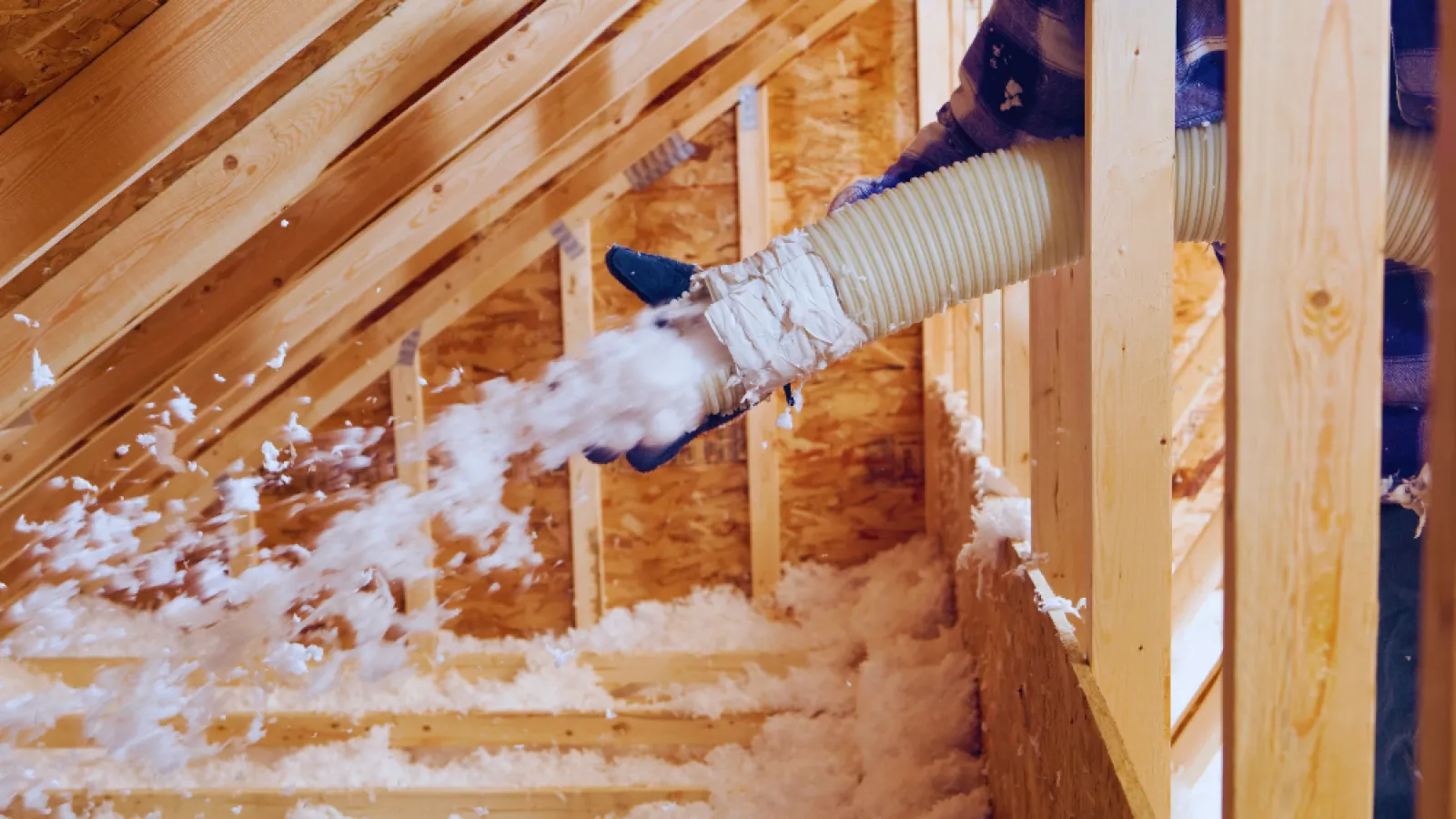Are you feeling drafts in your home, noticing higher energy bills, or wondering if your insulation is adequate? You're not alone. Many homeowners struggle with determining the right amount of insulation for their homes. This comprehensive guide will walk you through everything you need to know about calculating your insulation needs and ensuring your home stays comfortable year-round.
Signs You Need More Insulation
Before diving into calculations, let's identify common signs that indicate your home may have insufficient insulation:
- Uneven temperatures between rooms or floors
- High energy bills during heating and cooling seasons
- Ice dams forming on your roof during winter
- Drafts or cold spots near walls and ceilings
- Attic temperature that matches outdoor temperature
- HVAC system running constantly to maintain desired temperature
If you're experiencing any of these issues, it's time to evaluate your current insulation and determine what improvements are needed.
Step 1: Determine Your Climate Zone
The first and most crucial step in calculating your insulation needs is identifying your climate zone. The U.S. Department of Energy divides the country into different climate zones, each with specific insulation requirements.
How to Find Your Climate Zone:
- Visit the U.S. Department of Energy's climate zone map
- Enter your ZIP code or locate your area on the map
- Note your zone number (typically 1-8, with higher numbers indicating colder climates)
Your climate zone directly impacts the R-value requirements for your home. Colder climates require higher R-values to maintain energy efficiency and comfort.
Step 2: Understanding R-Values
R-value measures thermal resistance - essentially, how well a material resists heat flow. The higher the R-value, the better the insulation performance. Different areas of your home require different R-values based on your climate zone.
Recommended R-Values by Climate Zone:
Attic Insulation:
- Zones 1-2 (Hot climates): R-30 to R-49
- Zones 3-4 (Moderate climates): R-30 to R-60
- Zones 5-8 (Cold climates): R-49 to R-60
Wall Insulation:
- Zones 1-2: R-13 to R-15
- Zones 3-4: R-13 to R-15
- Zones 5-6: R-20 to R-21
- Zones 7-8: R-20 to R-21
Floor Insulation:
- All zones: R-25 to R-30 for floors over unconditioned spaces
Note: These are general recommendations. For Ohio specifically, R-18 is commonly recommended for walls, while R-25 is typical for floors over crawl spaces.
Step 3: Measure Your Space
Accurate measurements are essential for calculating your insulation needs and estimating costs.
What You'll Need:
- Measuring tape
- Flashlight or headlamp
- Ruler or measuring stick
- Calculator
- Paper and pencil for notes
Measuring Different Areas:
Attic Measurements:
- Measure the length and width of your attic floor
- Multiply these numbers to get total square footage
- Measure the depth of existing insulation (if any) using a ruler
- Note the type of existing insulation (fiberglass batts, blown-in cellulose, etc.)
Wall Measurements:
- Measure the height and width of exterior walls
- Subtract areas for windows and doors
- Calculate total wall square footage
Floor Measurements:
- For floors over unheated spaces, measure length and width
- Calculate total square footage of the area needing insulation
Step 4: Calculate Required R-Value
If you already have some insulation, you don't need to start from zero. Here's how to determine what additional R-value you need:
Assessment Guidelines:
- Insufficient insulation: If existing insulation is at or below joist level in your attic
- Adequate insulation: If insulation extends several inches above the joists
- Wall insulation: Check for gaps, compression, or moisture damage
Calculation Formula: Required R-Value = Recommended R-Value - Existing R-Value
Example:
- Your climate zone recommends R-49 for attics
- You currently have R-19 insulation
- Additional R-value needed: R-49 - R-19 = R-30
Step 5: Choose Your Insulation Type
Different insulation materials offer varying R-values per inch of thickness:
Common Insulation Types and R-Values:
- Fiberglass batts: R-3.1 to R-3.4 per inch
- Blown-in cellulose: R-3.6 to R-3.8 per inch
- Blown-in fiberglass: R-2.2 to R-4.3 per inch
- Spray foam (closed-cell): R-6.0 to R-7.0 per inch
- Spray foam (open-cell): R-3.5 to R-3.6 per inch
Step 6: Calculate Thickness Needed
Once you know your required R-value and chosen insulation type, calculate the thickness needed:
Formula: Thickness (inches) = Required R-Value ÷ R-Value per inch
Example:
- Need to add R-30
- Using blown-in cellulose (R-3.7 per inch)
- Thickness needed: R-30 ÷ 3.7 = 8.1 inches
Step 7: Calculate Material Quantity
For Batts and Rolls:
- Calculate square footage of area to be insulated
- Check product packaging for coverage area per package
- Divide your total square footage by coverage per package
For Blown-In Insulation:
- Use the manufacturer's coverage chart
- Charts typically show bags needed per 1,000 square feet at various R-values
- Multiply by your actual square footage
Professional Assessment vs. DIY
While this guide helps you understand insulation requirements, professional assessment offers several advantages:
Benefits of Professional Evaluation:
- Thermal imaging to identify problem areas
- Air leakage testing to find gaps and cracks
- Moisture assessment to prevent mold and rot
- Code compliance verification
- Proper installation techniques
- Safety considerations for electrical wiring and ventilation
Special Considerations
Air Sealing First
Before adding insulation, seal air leaks around:
- Electrical outlets and fixtures
- Plumbing penetrations
- Ductwork connections
- Attic hatches and pull-down stairs
- Windows and doors
Ventilation Requirements
Proper ventilation is crucial, especially in attics:
- Maintain airflow between soffit and ridge vents
- Don't block ventilation with insulation
- Consider vapor barriers in certain climates
Safety Precautions
- Electrical hazards: Avoid covering recessed lights or junction boxes
- Structural integrity: Don't exceed floor joist load capacity
- Fire safety: Use appropriate insulation types near heat sources
Cost Considerations
Understanding insulation costs helps with budgeting and ROI calculations:
Factors Affecting Cost:
- Insulation type and R-value
- Square footage to be insulated
- Accessibility of installation area
- Professional installation vs. DIY
- Air sealing requirements
- Removal of old insulation (if needed)
Typical Cost Ranges (including installation):
- Blown-in attic insulation: $1.50 - $3.50 per square foot
- Batt insulation: $1.00 - $2.50 per square foot
- Spray foam: $3.00 - $7.00 per square foot
Energy Savings Calculator
Proper insulation provides long-term energy savings. Consider these factors:
Annual Savings Potential:
- Well-insulated homes can save 10-50% on heating and cooling costs
- Payback period typically ranges from 2-8 years
- Increased home value from energy efficiency improvements
Variables Affecting Savings:
- Local utility rates
- Climate conditions
- Home size and design
- HVAC system efficiency
- Current insulation levels
Common Mistakes to Avoid
Installation Errors:
- Compressing insulation, which reduces R-value
- Leaving gaps between insulation pieces
- Covering soffit vents and blocking airflow
- Mixing insulation types improperly
- Ignoring vapor barriers where required
Measurement Errors:
- Underestimating square footage
- Not accounting for irregular spaces
- Forgetting to subtract obstacles like ductwork or storage areas
Get Professional Help
While understanding insulation requirements empowers homeowners to make informed decisions, professional installation ensures optimal results. At USA Insulation, our experts provide:
- Free in-home energy assessments
- Customized insulation solutions for your climate zone
- Professional installation with lifetime warranties
- Quality materials designed for long-lasting performance
- Air sealing services to maximize efficiency
Don't let inadequate insulation continue costing you money and comfort. Our team of certified professionals will assess your home's specific needs and recommend the most cost-effective insulation solutions.
Ready to improve your home's energy efficiency? Request your free quote today and discover how much you could save with proper insulation. Our experienced team serves homeowners nationwide with proven insulation solutions that deliver lasting results.



